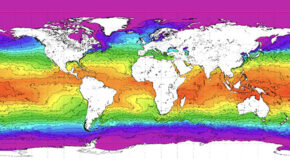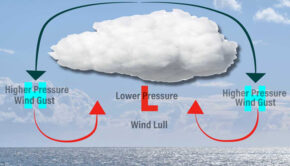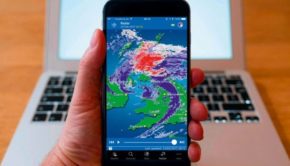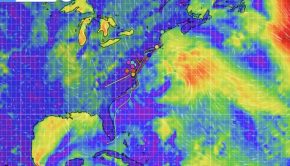Improvements in Weather Forecast Modeling
Published on October 14th, 2015
Sailing Weather Service chief meteorologist Chris Bedford, with a long history of success assisting leading teams in the sport, provides this update on changes to the forecasting tools…
Following hurricane Sandy in 2013, the US National Weather Service (NWS) was awarded supplemental funding to significantly improve its computing resources. Much of that money has been directed toward improving weather modeling services.
Over the past year or so, some of those improvements have begun to trickle through the system and we are now seeing the results. Earlier this year the Global Forecast System (GFS) model underwent a significant change. There have also been improvements in short term forecasting.
Now, I won’t say that all these changes have been improvements, but I certainly believe they are steps toward better weather forecasts and provide more useful data for sailing applications such as optimal route planning, race strategy development and tactical risk analysis.
This month, NWS is set to deploy a significant improvement in the GFS Ensemble Modeling System (GEFS). With the coming post-Sandy-financed upgrade, the model gets greatly improved physics and resolution.
The output available to users will include doubling its resolution in both time (from 6 hourly intervals to 3 hourly) and space (from 1 degree lat-lon resolution to 0.5 degree). This will make it even more valuable to offshore and coastal sailors as they plan their race strategies and consider the associated risks/benefits.
A powerful tool with particular application to offshore racing, the GEFS differs from the GFS in that it is a collection of over 20 models (called “members”) – all based on the GFS, but each with slightly different initial conditions.
The idea behind the GEFS is to recognize the fact that we cannot perfectly describe the initial state of the atmosphere. In order to model the future, we must make some assumptions as to what is happening between observation stations or locations where we do know the initial conditions in detail.
Invariably, as the forecast projects forward in time, error is induced in the forecast due to the assumptions made at the beginning. We see this in the GEFS as the forecasts of the individual members diverge from each other as time projects forward in the forecast.
In application to Ocean Racing, the GEFS allows for a more useful Optimum Route Analysis when we can see the sensitivity of the forecast to the initial conditions.
In cases where the solutions between the GEFS model members are quite similar, we can have higher confidence in the forecast and routing solutions. Alternatively, when the solutions begin to diverge between the members (and they always do over time), our confidence in the forecast and routing projections diminishes.
This trait of relating the forecasts to confidence or reliability is extremely valuable when determining what optimum route to take or race strategy to employ.
In an offshore or coastal race if, for example, the Optimum Route one sees from navigation software sends you into a corner, you are taking a risk if the ensemble members diverge in their weather prediction. Alternatively, if the Ensemble members have a strong consensus which agrees with that corner banging strategy, you can have more comfort in the expectation that what may appear to be a radical move will actually pay off.
That example is just the tip of the iceberg when it comes to how GEFS modeling can help a navigator/tactician. The GEFS is very useful in helping develop confidence in the weather forecast and therefore confidence in race strategy, and I expect this will be even more so with the GEFS upgrade.









 We’ll keep your information safe.
We’ll keep your information safe.